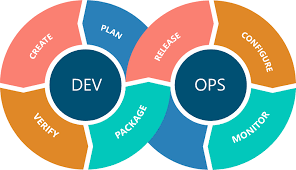A Comprehensive Guide to AWS Data Migration Services

Introduction:
The continuous change in the cloud computing landscape increasingly makes organizations rely on AWS to meet their computing needs. AWS data migration services are the fastest and most effective approach to choose for transferring data to or from the AWS platform. It provides an effective array of services for data migration which makes the process as efficient as possible. This blog will explain Amazon data migration services, its capabilities to enhance migration, and the benefits you receive when using this tool.
About AWS Data Migration Services
Amazon Database Migration Services offers a set of tools tailored to facilitate the seamless transition of data to the cloud. Picture your valuable information stored in databases or local storage, and the desire to smoothly migrate into the expansive AWS environment. These services act as reliable companions in this journey, addressing the complexities of database migration or ensuring a secure transfer of large datasets to the cloud. It’s akin to having a team of experts guiding your data on a trouble-free expedition, ensuring it reaches its destination intact and ready to flourish in the realm of cloud computing. So, whether you’re well-versed in technology or just venturing into the cloud, AWS db migration services serve as a friendly ally to ensure your data leaps effortlessly.
The Types of AWS Data Migration Services
As we discussed, AWS provides various services for data migration according to the business’s unique needs, these services can broadly be categorized as:
Database migration services: Database Migration Services, like Amazon Database Migration Service (DMS) and Schema Conversion Tool (SCT), make it easy to move data between diverse database systems. This ensures a seamless transition while safeguarding data integrity and compatibility, which is essential for organizations adjusting to new settings or transitioning between database engines.
Cloud storage migration services: These services facilitate the smooth movement of data from local storage to cloud-based alternatives, as demonstrated by AWS solutions like Snowball and DataSync. Snowball employs tangible devices for transferring extensive data, and DataSync enhances network protocols to ensure a secure and efficient transition between on-premises and AWS cloud storage services. These offerings empower organizations to shift to cloud storage seamlessly, providing a blend of flexibility and dependability.
Capabilities of AWS Data Migration Services
Now that we are clear about what exactly AWS storage migration services are, you must be wondering about the actual capabilities this service offers. Businesses and organizations have different wants and needs when it comes to their databases, and most needs can be fulfilled by the capabilities of AWS db migration services.
The capabilities are:
- Homogenous migrations
- Heterogeneous migrations
- Database consolidation
- Development and testing
- Continuous data replication
Homogeneous Migrations
Homogeneous database migration refers to data migration across identical or similar database engines. For example, moving from an Oracle source database to an Amazon RDS destination database is called a homogenous migration. This is because the database code, data types, and schema structure are the same in both databases.
This is the simplest sort of data migration, involving only one step. Simply construct the migration task, connect to the source and target databases, and click Start. AWS DMS will handle the rest.
Heterogeneous Migrations
Heterogeneous database migration refers to data movement between different database engines. For example, migrating from an Oracle source database to a PostgreSQL target database is considered heterogeneous since the database code, data types, and schema structure of the two databases differ.
Typically, the schema and code must be modified to match the target database before the migration can begin. This adds one stage to the migrating process. After the database code and schema have been converted, migration can start. AWS DMS automatically changes data types to match the target database during migration.
Database Consolidation
Organizations may have many databases, which can be difficult to maintain. AWS db migration services can combine many source databases into a single target database. Database consolidation works with both homogeneous and heterogeneous migrations. Furthermore, your source databases do not need to be in a single location.
Development and Testing
During the development of web and mobile apps, data is frequently moved into and out of the cloud. AWS storage migration enables developers to use copies of genuine production data and then replicate adjustments to the on-premise production environment. Developers can also move existing AWS Cloud production database versions to their on-premise systems. These features enable development teams to avoid DevOps process disruptions and ensure that the production system is always updated to the most recent version.
Continuous Data Replication
The AWS Data Migration Service can also be used for continuous data replication. This capability has proven useful in a variety of scenarios, including catastrophe recovery and database synchronization. Furthermore, AWS DMS data replication can be performed on both homogeneous and heterogeneous sources.
The Benefits of AWS Data Migration Services
AWS Cloud Migration Services offer numerous benefits. Scalability allows businesses to adjust resources dynamically. The pay-as-you-go model ensures cost efficiency, eliminating hefty upfront investments. Flexibility and agility characterize AWS, fostering innovation and quick responses to market demands. With a global presence, AWS enables worldwide application deployment for low-latency access. Security is paramount, with robust features and compliance certifications, while reliability and high availability are ensured through redundancies. AWS provides innovative services, including cutting-edge technologies like AI and machine learning. Elasticity allows seamless resource scaling, and robust data backup and recovery cater to unforeseen circumstances. Ultimately, AWS Cloud Migration Services enable organizations to focus on core competencies by outsourcing infrastructure management, fostering a strategic and efficient approach to IT operations.
conclusion
In summary, AWS Data Migration Services are the go-to solution for swiftly and effectively transferring data to or from the AWS platform. Tailored tools act as reliable guides in navigating the complexities of database migration or securely transferring large datasets to the cloud. With capabilities like homogeneous and heterogeneous migrations, database consolidation, development and testing support, and continuous data replication, AWS caters to diverse business needs. Real-time benefits include scalability, cost efficiency, flexibility, global reach, security, reliability, innovation, elasticity, and robust data management. In the dynamic world of cloud computing, Amazon Database Migration Services empowers organizations to focus on core competencies with a strategic and efficient approach to IT operations.
FAQs
What is the purpose of Google Data Migration Service?
The purpose of Google Data Migration Service is to facilitate the smooth and efficient transfer of data between different sources, allowing organizations to seamlessly migrate their data to the Google Cloud Platform. It serves as a reliable tool for businesses looking to transition their data to Google Cloud, ensuring a hassle-free and secure migration process.
What factors should organizations consider when choosing a data migration services company?
When choosing an AWS data migration services company, organizations should consider factors such as expertise in handling specific data types, diverse migration scenarios, a proven track record of successful migrations, adherence to security standards, scalability of services, and client testimonials. Assess the company’s ability to customize solutions according to the organization’s unique needs and provide ongoing support. Additionally, evaluate the company’s technology stack, data validation processes, and integrity measures for a reliable data migration experience.
What are the different AWS DMS migration types?
AWS Database Migration Service (DMS) supports two main types of migrations: homogeneous and heterogeneous. The data in homogeneous migrations is transferred between identical or similar database engines, ensuring a straightforward process. On the other hand, heterogeneous migrations involve moving data between different database engines, requiring adjustments to the schema and code to match the target database. AWS DMS automates these processes, providing a versatile solution for organizations with diverse database migration needs.



















































